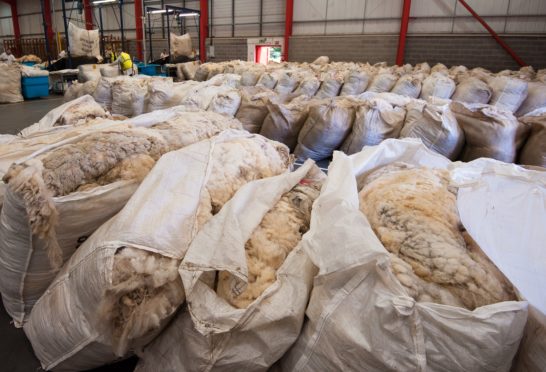Wool prices will be severely impacted by the Covid-19 crisis for the next 12-18 months, warns British Wool.
The wool marketing body, which is owned by approximately 40,000 sheep farmers across the UK, says the coronavirus pandemic has had a significant impact on global demand.
The organisation’s chief executive, Joe Farren, said British Wool experienced reduced demand for wool from the Chinese market in January. Thereafter, the global market for wool from cross-bred sheep slowed significantly in February, and it has been shut since March.
Mr Farren said the period between February and May was usually the busiest selling period of the year, and as a result of market closures the body has around an extra 7 million kg of unsold wool from 2019, on top of 3m kg of wool normally handled at this time of year.
He said: “The severe, hopefully short- term, drop in demand for wool products coupled with the huge global overhang in cross-bred wool stocks from the 2019 season is likely to severely impact prices for the next 12-18 months.
“It will also make our longer term objective of repositioning British Wool as a premium product more challenging.
“However, finding new demand for our wool in China at attractive prices will be a key driver of the early stages of recovery in British Wool prices.
“We must be more determined than ever in this objective.”
He said British Wool’s depots and collections sites were ready to start receiving wool, and protocols are in place to ensure the safety of producers and British Wool staff.
The National Sheep Association welcomed confirmation that depots and collection sites were open for business.
The association’s chief executive, Phil Stocker, said: “With so much uncertainty generally, we welcome that we are in a situation where shearing gangs can operate and wool can be moved.
“However, the news of the carryover of 10m kg, nearly a third of British Wool’s annual clip, is less welcome, although the UK is not alone in this.
“Fortunately, most British sheep farmers are used to wool covering shearing and handling costs and often not a lot more, with few farmers relying on wool values for a living.”







